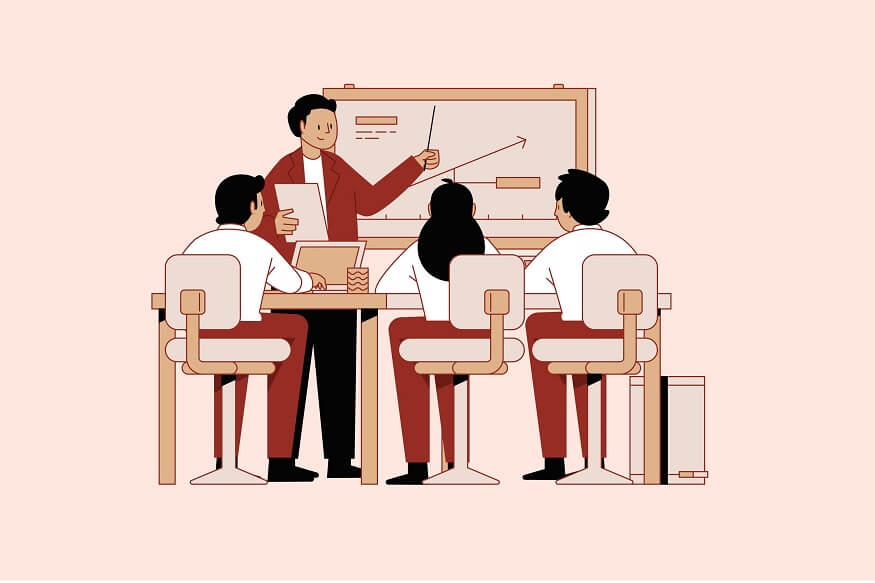It is impossible to exaggerate the importance of teachers in influencing the future because education is the foundation of any healthy society. The demand for efficient teaching methods has never been higher than it is in the quickly changing educational environment of today. The increasingly popular idea of teacher collaboration is crucial in raising student achievement. In this article, the relevance of teacher collaboration is examined, along with its advantages and practical applications for fostering a more effective and successful learning environment.
Also Read: Metacognitive Strategies In The Classroom
Understanding Teacher Collaboration
Teacher collaboration refers to the practice of educators working together, sharing ideas, resources, and strategies to enhance their teaching and ultimately improve student learning. It is not limited to informal conversations in the staffroom but extends to structured initiatives that encourage teachers to collaborate on curriculum development, assessment, and pedagogical approaches. Teacher collaboration can occur within schools, across schools, and even nationally, fostering a culture of continuous improvement in education.
Also Read: Importance of Teacher and Students Relationship
Role of teacher collaboration in improving student outcomes
Teacher collaboration plays a crucial role in improving student outcomes in various ways. When teachers work together, they can create a more supportive and effective learning environment that benefits students academically, socially, and emotionally. Here are ten key roles that teacher collaboration plays in enhancing student outcomes:
Curriculum Alignment: Collaborative teachers can align their curriculum and teaching strategies to ensure that students receive a consistent and cohesive educational experience.
Data Analysis: Teachers can analyse student data collectively, identify areas where students are struggling, and develop targeted interventions to address those challenges.
Differentiation: Collaborating allows teachers to share strategies for differentiating instruction, ensuring that each student’s unique learning needs are met.
Professional Development: Collaborative efforts can facilitate ongoing professional development, helping teachers stay current with best practices and pedagogical innovations.
Peer Observation and Feedback: Teachers can observe each other’s classes and provide constructive feedback, leading to continuous improvement in instructional techniques.
Sharing Resources: Collaboration enables the sharing of resources, including lesson plans, materials, and technology tools, which can enhance the quality of instruction.
Problem-Solving: When facing classroom challenges, teachers can brainstorm solutions and draw on the collective wisdom of their colleagues to find effective strategies.
Co-Teaching: Collaborative teaching models, such as co-teaching, allow teachers with different expertise to work together in the same classroom, benefiting students with diverse needs.
Parent Communication: Collaborative teachers can coordinate efforts when communicating with parents, ensuring a unified message and a consistent approach to addressing concerns.
Positive School Culture: Teacher collaboration fosters a positive school culture where educators feel supported and valued, which can have a ripple effect on student engagement, behaviour, and motivation.
Also Read: Advantages of smart classroom
Benefits of Teacher Collaboration
Teacher collaboration enriches educators’ professional development, fosters student success, and cultivates a positive school culture. Explore its multifaceted benefits below.
Enhanced Professional Development: One of the most significant advantages of teacher collaboration is the continuous professional growth it affords. When educators collaborate, they engage in a dynamic exchange of ideas, best practices, and innovative teaching methods. This leads to an improved skill set and a deeper understanding of effective teaching strategies.
Personalised Learning: Collaboration allows teachers to tailor their instruction to individual student needs. By sharing insights and experiences, teachers can identify interventions and adapt their teaching approaches to cater to diverse learning styles, abilities, and preferences.
Improved Student Achievement: Numerous studies have demonstrated a strong positive correlation between teacher collaboration and student achievement. Collaborative teaching practices often result in increased student engagement, motivation, and performance.
Effective Problem-Solving: When educators come together to address educational challenges, they can pool their knowledge and creativity to develop innovative solutions. This can be particularly valuable in tackling issues like student underachievement, behaviour management, and curriculum development.
Reduced Teacher Isolation: Teaching can be a solitary profession, with educators often isolated in their classrooms. Collaboration offers a sense of camaraderie and support, reducing feelings of isolation and burnout among teachers.
Enhanced School Culture: A collaborative school culture fosters positive relationships among staff members. This not only benefits teachers but also creates a more welcoming and inclusive environment for students.
Continuity and Consistency: Collaborative planning ensures that there is consistency in curriculum delivery and assessment practices across the school. This helps students transition smoothly from one grade or class to another.
Also Read: How do you implement talking circles in the classroom?
Implementing Teacher Collaboration
Implementing teacher collaboration requires strategic leadership, dedicated resources, and a clear focus on enhancing teaching practices for improved student outcomes.
Establish a Collaborative Culture: School leaders must foster a culture of collaboration by providing opportunities for teachers to come together. This can include regular staff meetings, professional learning communities, and dedicated collaboration time.
Supportive Leadership: Effective school leaders should not only encourage collaboration but also actively participate in it. Their involvement demonstrates the importance of collaboration and sets a positive example for the entire staff.
Time and Resources: To facilitate collaboration, schools should allocate time and resources for teachers to engage in meaningful collaborative activities. This may involve providing training, materials, and dedicated meeting spaces.
Clear Goals and Objectives: Collaborative efforts should have clear goals and objectives. Whether it’s improving student literacy, addressing behaviour issues, or enhancing assessment practices, having a defined purpose ensures that collaboration is focused and productive.
Encourage Interdisciplinary Collaboration: Encouraging teachers from different subject areas to collaborate can lead to innovative approaches that cross traditional disciplinary boundaries.
Promote Peer Observation: Peer observation allows teachers to learn from each other by observing classroom practices. This can be a valuable form of collaboration that fosters reflection and improvement.
Celebrate Success: Recognising and celebrating the successes that result from collaboration can motivate teachers to continue working together and inspire others to join in.
Also Read: How to Encourage Participation in the classroom
Teacher collaboration is an essential component of modern education. It empowers educators to continuously improve their practice, personalise learning for students, and ultimately enhance student outcomes. By fostering a collaborative culture, providing support, and addressing challenges, schools and policymakers can ensure that teacher collaboration continues to play a crucial role in shaping the future of education. As we move forward, it is imperative that we recognise and celebrate the vital contribution of collaborative teaching practices to the growth and success of our students.
EuroSchool teachers take the time to plan lessons that are relevant to students’ interests and that will challenge them to learn. They use a variety of teaching methods to keep students engaged, and they provide clear and concise instructions.










